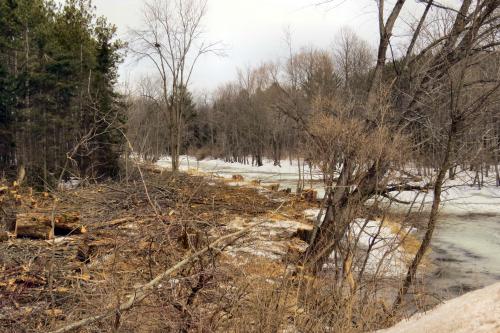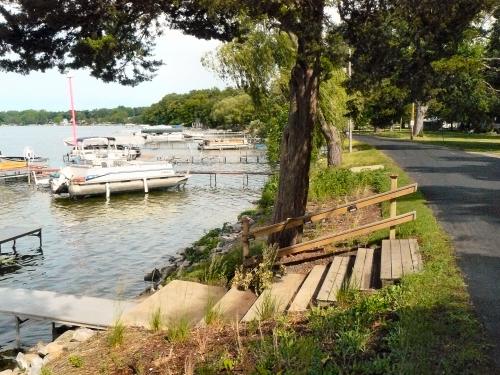Riparian forest management
Riparian forests, those forests along waterways, are sometimes treated as a “no cut” zone. Unfortunately, this benign neglect may reduce values attributed to these special forests.

A riparian area is one that runs adjacent to open water; rivers, streams, ponds or lakes. If forested, then these are riparian forests. Riparian forests do much to determine and maintain water quality. Many times, these water quality and aquatic habitat values drive the discussion about riparian forest management. But there are many other values inherent to these forests.
Species diversity can be unusually high in riparian forests. A Wisconsin study indicated 80 percent of threatened and endangered animals utilize riparian areas. Riparian forests are common travel corridors for many wildlife species and receive high use for food, nesting, shelter, loafing and other wildlife activity.
Soil hydrology can be complex and variable in riparian forests, leading to increased plant species richness. Visual quality is often high, indicated by the location preference of so many houses, cottages, campgrounds and other human uses. Lakeshore or riverside real estate commands higher prices.
These forests can also be more productive than upland forests, which lead to better tree growth and potentially high timber values, especially if management is applied. Disturbance through timber harvest may be a key factor in maintaining such values as productivity, species diversity and water quality. “Light tight” streams, where the adjacent forest has not been disturbed recently, may be less healthy.
The flipside is that riparian areas can also be more sensitive to soil damage than upland forests. Riparian forests are, indeed, special resources in many ways. A forester needs to exert extra effort to assess riparian conditions and adjust management as appropriate for each situation. Like other forests, management can enhance these values. Both abuse and benign neglect can degrade them.
In the Great Lakes region, riparian forests are not a small subset of the forest whole. Estimates in Minnesota show 10-40 percent of forests are within 200 feet of open water. Simply locking-down this much forest poorly serves both humans and nature.

Poor harvesting practice, but regeneration will likely occur. Photo credit: Bill Cook
Riparian corridors are not uniform in their width, shape and structure. There are terraces, slopes, oxbows and benches. The alluvial soils are highly variable. The related forest cover is as equally variable.
Simply assigning an arbitrary and standard width fails to recognize this variability and potentially may fail to protect the many values of a highly variable geographical set of features. Uniform management, or excluding management, fails to recognize the biological diversity and other values of riparian forests.
The landscape within which a riparian forest exists is another important consideration. Much of the research addressing riparian forests is from agricultural settings. Less research has occurred in forested landscapes. Forest management effects on vegetation in riparian areas are not fully understood.
A “light tight” stream may have lower productivity than one managed for more light. Photo credit: Bill Cook
Management can do several things to enhance riparian values. Standing snags (dead trees) and large, downed logs can be retained and/or created. Conifer species should be maintained. Later successional forest types should be encouraged.
Foresters can establish multiple zones where management emphasis varies with riparian conditions. During a harvest, variable amounts of tree retention can be designed to enhance riparian values. However, increased light conditions may encourage exotic species. This threat should be considered.
The bottom line is that riparian forests should be managed to enhance the resource and timber management can be a great tool. However, because these forests are particularly important in many ways, and especially sensitive to soil damage, management practices should be adjusted accordingly to sustain riparian resources. There is no one-size-fits-all solution to such a variable and valuable resource, which is just another reason Michigan State University Extension recommends hiring a consulting forester to help develop forest management plans.



 Print
Print Email
Email



